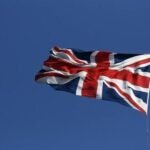- GBP/JPY pulls back after touching 200-day SMA despite better-than-expected UK data.
- Analysts still expected the BoE to make rate cuts in 2024.
- The Yen gains strength from positive GDP data and expectations of more rate hikes from BoJ.
GBP/JPY pauses in its recovery rally after touching the 200-day Simple Moving Average (SMA) and pulls back almost half a percent on Friday to trade in the 190.60s, despite the release of broadly positive data out of the UK.
The data failed to impact UK 10-year Gilts, however, which remained at 3.9% and revealed bond traders have not altered their inflation expectations after the releases. This, in turn, suggests they see little change in current expectations for UK monetary policy, a major driver of Pound Sterling.
Data out on Friday showed UK Retail Sales rose by 0.5% in July reversing a 0.9% decline in June. UK GDP was flat in June compared to May, and showed 0.6% growth in Q2 compared Q1, as forecast, when the economy grew 0.7%. Industrial and Manufacturing Production, meanwhile, both easily beat expectations month-over-month in June but continued to show declines on a year-over-year basis. Despite the data being overall positive the Pound weakened versus the Japanese Yen (JPY).
The Japanese Yen (JPY) may be holding up both because of technical selling at the level of the 200-day SMA and because of data on Tuesday which showed Japanese GDP surprising to the upside. The Japanese economy grew by 0.8% in Q2 on a quarter-over-quarter basis – a significant recovery from the 0.6% fall it registered in Q1. It was the strongest quarterly growth since Q1 of 2023, with private consumption, which accounts for more than half of the economy, rising for the first time in five quarters. The result easily beat the consensus estimate of 0.5%. The result was put down to increased spending after the spring wage negotiations that saw an average pay rise 5.17% in the country, the highest in over 30 years, according to Trading Economics.
Central Bank implications
Sterling’s lack of upside following the positive data may be because it does little to alter the outlook for monetary policy and interest rates. Most analysts still expect the Bank of England (BoE) to cut interest rates again in 2024 as inflation eases. This, in turn, is likely to have a broadly negative effect on GBP and GBP/JPY since lower interest rates attract less capital inflows.
“The recovery in (retail) sales marks a good start to Q3. While Q2 GDP data came in firm, the monthly June data reported at the same time suggested a loss of momentum as the quarter closed out. Bottom line: the data suggest the BoE will continue cutting rates,” concludes Dr. Win Thin, Global Head of Markets Strategy, at Brown Brothers Harriman.
Societe Generale’s Kenneth Broux was less unequivocal, saying, “The takeaway for the BoE is not clear cut, but the slowdown in services inflation to 5.2% from 5.7% and average earnings ex-bonuses to 5.4% 3m YoY vindicates the decision to lower bank rate two weeks ago to 5.0%.”
Nor did it alter the view of Capital Economics who are relatively dovish, seeing multiple cuts to UK interest rates in the second half of 2024.
“While expectations for interest rates in the UK have already fallen by 40bp by end-2025 since mid-July, our projections for UK CPI inflation to remain below the 2.0% (BoE) target for much of 2025 and 2026 suggest to us that the Bank of England will ease monetary policy by even more than investors now anticipate,” says Ruben Gargallo Abargues, Assistant Economist at Capital Economics.
Abargues expects 10-year Gilt yields to fall to 3.50% by the end of 2024 and the Pound to weaken from 1.29 now, to 1.25 by year end.
When it comes to Japanese monetary policy the consensus seems to be that the Bank of Japan (BoJ) will probably hike interest rates one more time before the end of 2024. This comes on the back of both the stronger-than-expected GDP data and the quite hawkish comments from the BoJ at the last meeting when they decided to raise interest rates to 0.25% from the 0.0% to 0.10% range it was in before. It is the second time the BoJ has increased rates in 2024.
“We’re still of the view that another hike is on the cards later this year, given the BoJ’s relative hawkishness at last week’s meeting, not to mention the fact that, after today’s move, the yen is now barely any stronger than it was then,” says Thomas Mathews, Head of Markets Asia Pacific for Capital Economics.
Overall the still strong expectation that the BoE will cut interest rates again this year and the BoJ will raise them, suggests a headwind for GBP/JPY as it attempts to recover from the 180.09 August 5 lows.




















